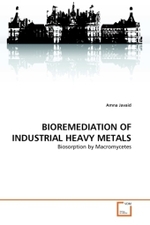Full Description
The Communication Ecology of 21st Century Urban Communities addresses the questions of whether it (still) matters what neighborhood individuals live in and if it is still necessary and possible for city dwellers to build and maintain place-based communities.
The book's contributors address how urban communities are formed, reformed, and transformed from a communication infrastructure theory perspective. Through the lens of this theory, communication is defined as a fundamental social process by which cities are sustained and changed over time. The chapters in this book elaborate the theoretical and methodological frameworks of the communication infrastructure theory approach; articulate theory-driven and multi-method frameworks for the study of the city; and speak to pressing, contemporary, research- and policy-related challenges (or questions).
The broad array of issues addressed within this volume is expected to draw the interest not only of communication researchers and professionals, but also of students, scholars, practitioners, and policymakers from a variety of backgrounds and with an interest in different aspects of life in the city, including: public health, technology, civic engagement, and urban planning and design.
Contents
Sandra J. Ball-Rokeach: Prologue: Project History and Introduction - Yong-Chan Kim/Joo-Young Jung/Holley A. Wilkin/Matthew D. Matsaganis: Introduction - Part One: Theory and Method - Yong-Chan Kim/Joo-Young Jung: Communication Infrastructure Theory as an Ecological Theory: Theoretical Framework and Key Concepts - Lewis A. Friedland: Toward an Integrated Urban Sociology of Communication: The Research of Sandra Ball-Rokeach and the Metamorphosis Project - Yong-Chan Kim: Communication Infrastructure Theory for Collective Problem Recognition and Problem-Solving in Urban Communities: Beliefs, Assumptions, and Propositions - Matthew D. Matsaganis/Holley A. Wilkin: Designing Research to Diagnose and Transform Urban Community Communication Infrastructures - Part Two: Communication Infrastructure Theory in Different Contexts - Joo-Young Jung/Risa Maeda: Overcoming Silence Through the Neighborhood Storytelling Network: Facing Controversy Over the Restart of the Nuclear Power Plant in the City of Kashiwazaki, Japan - Minhee Son: Examining the Links Between Church and Local Community Engagement: The Case of Korean Immigrants in Los Angeles - Chi Zhang/Wallis Motta/Myria Georgiou: The Enacted Communication Action Context of Ethnically Diverse Neighborhoods and Its Implications for Intergroup Communication - Katherine Ognyanova/Joo-Young Jung: Digital Connections: Tracing the Evolving Role of Technology in Local Storytelling Networks - Part Three: Communication Infrastructure Theory-Based Community Interventions - George Villanueva/Andrea Wenzel: The Engaged Communication Scholar: Designing CIT-Informed Engaged Research in Diverse Communities - Holley A. Wilkin/Matthew D. Matsaganis/Annis Golden: Implementing Communication Infrastructure Theory-Based Strategies in Community Health Access Interventions: Lessons Learned from Two Projects in Two Cities - Nien-Tsu Nancy Chen/Wenlin Liu, Katherine Ognyanova/Evelyn Moreno: The Alhambra Project: A Prototype for Using Communication Infrastructure Theory to Construct and Evaluate a Community News Site - Garrett M. Broad: Communication Infrastructure Theory and Community-Based Program Evaluation: The Case of Media Mobilizing Project and the CAP Comcast Campaign - Matthew D. Matsaganis/Holley A. Wilkin/Joo-Young Jung/Yong-Chan Kim: Epilogue: Emerging Issues and Future Directions - Contributor Biographies - Index.








